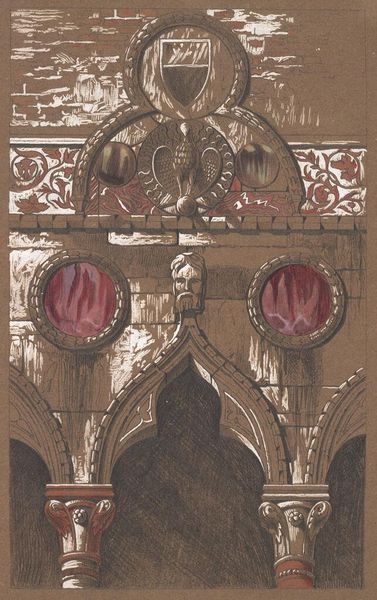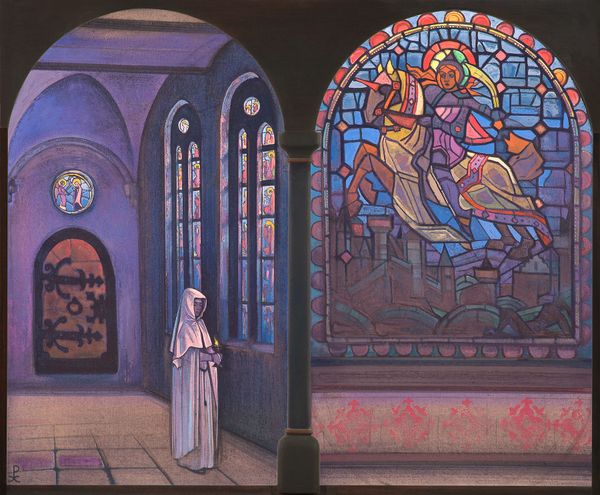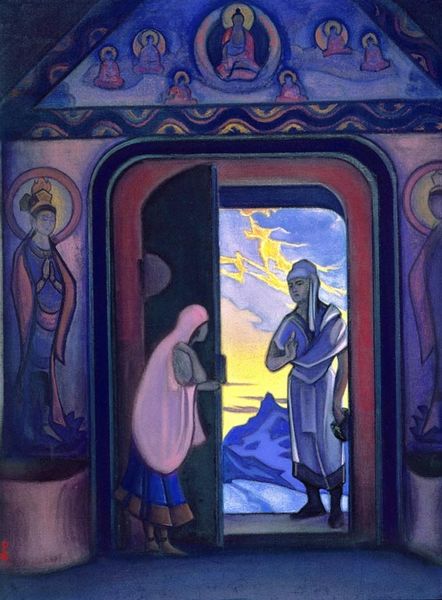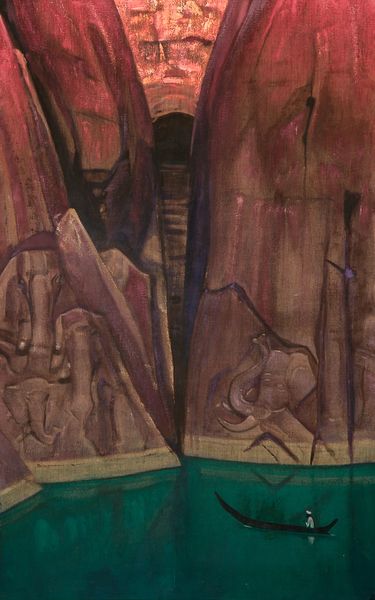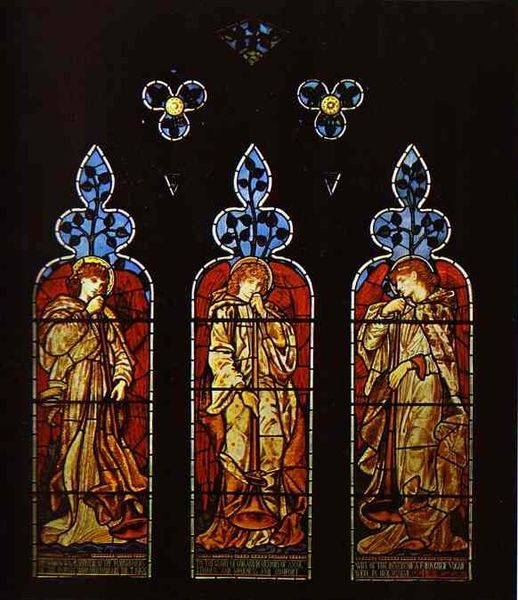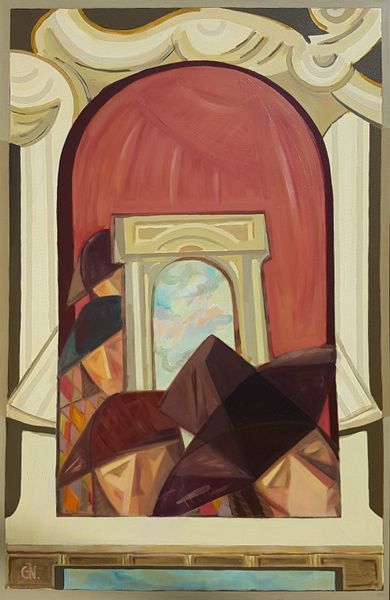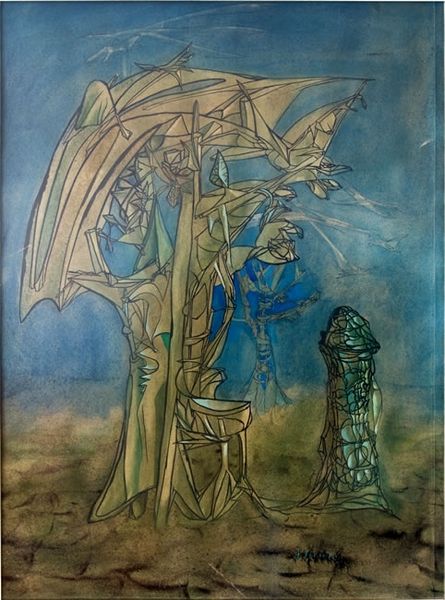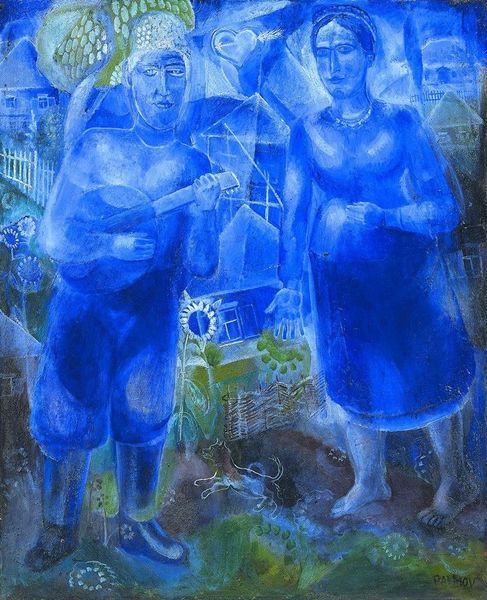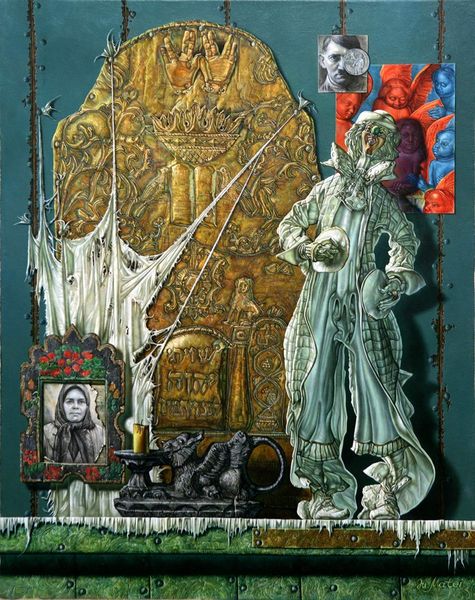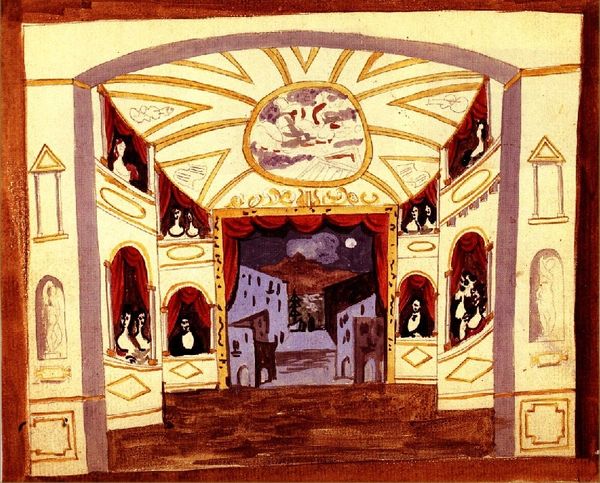
painting, watercolor
#
medieval
#
narrative-art
#
painting
#
figuration
#
watercolor
#
history-painting
Copyright: Public domain
Curator: What a fascinating watercolor we have here, "Shadows of the Past" painted by Nicholas Roerich in 1937, currently residing in the State Museum of Oriental Art in Moscow. Editor: My initial reaction? Hauntingly beautiful! There’s a spectral quality about it. It feels like witnessing a memory flicker to life, only to fade away again. That deep indigo and the figures almost dissolving... melancholic, but compelling. Curator: Precisely! The painting presents an interesting interplay between figuration and historical narrative art. Roerich cleverly uses a diamond-shaped stained glass window at the top of the composition, depicting a medieval scene, presumably casting these "shadows." Editor: Right. So you've got this jewel-toned scene in the glass that clashes so strongly with the darker shades and somber shapes below. It’s as if the artist were trying to say, "The past isn't as pretty as we think." Or maybe, “Idealized stories can't escape the gloom of history." The muted shades sort of suggest this dreamlike journey. Curator: Exactly. You also note the procession of figures beneath the stained glass. Their garb indicates a similar era to the scene depicted in the window. Yet, their hazy depiction contrasts sharply with the defined figures of the glass, implying a loss of clarity. Editor: There's an intriguing detachment between these medieval-esque figures and that bright scene above, like the actual humans are a bit downcast beneath all of the pretty window dressing, if you know what I mean. Plus the violet curtain feels staged. Almost as though the viewer were placed stage-side to glimpse a moment trapped between theatre and a real experience. Curator: Indeed. Roerich was very invested in medieval themes. He likely meant to evoke themes of remembrance and the interpretation of history, suggesting how we perceive the past versus what truly transpired. We also note how his command of watercolor here blends representation and atmospheric abstraction to reinforce these ambiguities. Editor: It all culminates in a scene suspended between truth and embellishment, memory and fantasy. It is history viewed from backstage, as it were, a poignant reflection on how we create, and perhaps distort, the narratives we tell ourselves. What do you reckon, would Roerich like our discussion, do you think? Curator: I’d dare say he’d appreciate how closely we considered both its artistic construction and underlying thematic content. I am personally very impressed. Editor: Me too! And with that said, perhaps it's time for our audience to reflect on it.
Comments
No comments
Be the first to comment and join the conversation on the ultimate creative platform.
